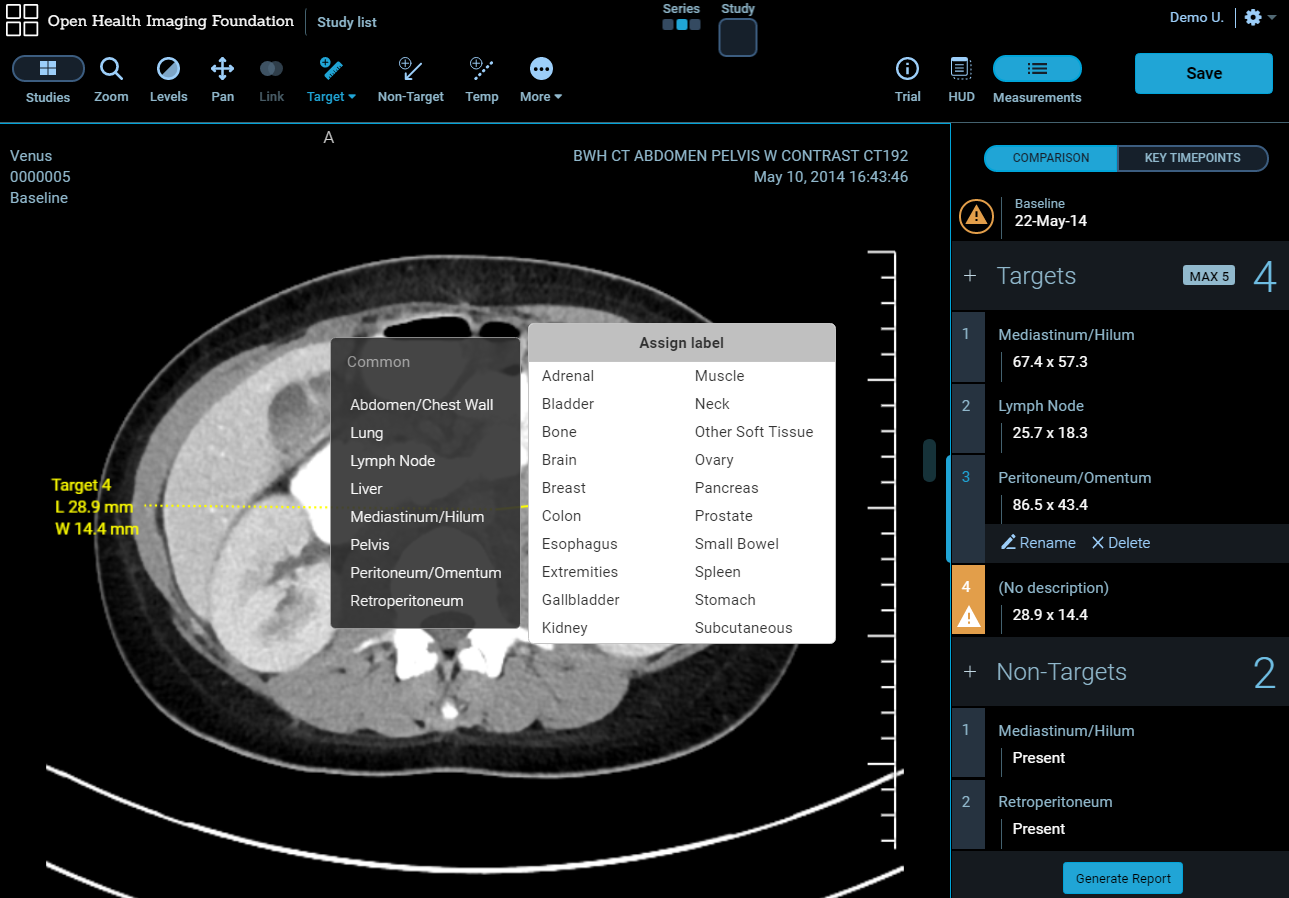13 Open-source Medical Imaging Frameworks and Toolkits
Table of Content
Medical imaging applications are a necessity in research and clinical practice. However, unlike years ago there are medical imaging specific frameworks that ease the development of medical imaging applications.
As our goal in Medevel.com to create useful resources for the medical apps developers community, here in this article we will list the most popular frameworks and libraries for building medical imaging apps.
Here are some articles were published here that have value for developers:
- DICOM development libraries and frameworks for Python,C++,Java and NodeJS
- AMI Medical Imaging (AMI) JavaScript ToolKit for building Web-based 2D/ 3D DICOM apps.
- 15 Best Open source Browser & Web-based DICOM Viewers
10 Open-source Medical Imaging Frameworks and Libraries

1- OHIF Viewer
OHIF Viewer is a complete open-source web-based DICOM Viewer. It's listed at the top of our list because it's production-ready and developer-friendly options. OHIF viewer is built on top of Cornorstone DICOM library and React.
We have covered OHIF Viewer a few times in Medevel.com as the top performed Web-based DICOM Viewer.
2- AMI Medical Imaging Toolkit
The AMI Toolkit is a JavaScript toolkit for building 2D/ 3D medical imaging applications in the web browser. AMI Toolkit itself is a set of powerful visualization libraries that makes use of WebGL. We have covered it here.
3- Cornerstone
When it comes to building a web browser DICOM viewer, Cornerstone is the best answer. It's a rich library for processing, viewing and editing DICOM images within the browser.
Cornerstone code can play well with other JavaScript frameworks and platforms like: React, VueJS, Angular and Meteor.
4- DWV (DICOM Web Viewer)
DWM is a tiny yet powerful DICOM imaging library for the browser. It's fast, developer-friendly and can be used with other JavaScript frameworks, you can check the examples with Angular and Vue.
5- GIMIAS (Medical Imaging Framework)
GIMIAS GIMIAS is a medical imaging and simulation framework. It features a highly configurable user-interface and many developer tools for building complex medical imaging processing or simulation applications.
GIMIAS is extensible through plugins and it focuses on building Clinical applications and prototyping.
6- DCM4CHE
DCM4CHE is a set of tools and libraries in Java for building medical imaging applications. It's used by many enterprise companies to build DICOM viewers and DICOM parsers in their Java applications.
7- ITK (Insight Toolkit)
Insight Toolkit (ITK) is a popular framework that takes part in creating many medical imaging apps and frameworks. It's a cross-platform and open-source toolkit with a powerful API and rich documentation.
The Insight Toolkit (ITK) has proven to be reliable in a battle-tested enterprise application.
8- QtDCM
QtDCM is a DICOM parsing library for Qt framework. Qt is a toolkit/ widget-based system for creating cross-platform applications. Qt applications are fast, and working seamlessly with high performance on even old machines.
QtDCM provides a complete and easy DICOM parsing tools and helpers to build DICOM applications with Qt. It uses the ITK Toolkit (#7).
9- OpenDICOM.NET
OpenDICOM.NET is a class library for Microsoft .NET for building DICOM applications. It also covers a completes support for C#.
OpenDICOM.NET project is formed of:
a. OpenDICOM-Sharp; complete API support for DICOM parsers and libraries for C#,
b. Opendicom-utils: a collection of tools for working with DICOM tags and DICOM image formats,
c. Opendicom-navigator: an implementation of OpenDICOM.NET with GTK window that focuses on DICOM datasets visualization and processing,
d. OpenDICOM.NET Beagles Plugin integration which provides a powerful desktop tool for searching, and filtering DICOM images on the local machine.
10- Papaya
Papaya is a small tiny browser-based DICOM viewer that uses web technologies. Though it's not built to be used by professionals, it can be hacked/ customizable for productions.
Currently Papaya is supporting NIFTI (.nii, .nii.gz), DICOM (compressed/uncompressed), GIFTI (.surf.gii) formats.
11- CamiTK: CAMI Medical Imaging Prototyping Toolkit
CamiTK is a complete medical imaging prototyping toolkit for researchers and developers who are interested in fast and experimental app builds.
CamiTK is providing a complete outline for rapid prototyping medical applications with high performance and complete cross-platform for Windows, Linux and macOS.
12- WEASIS MEDICAL Viewer
WEASIS Medical Viewer is a multipurpose standalone medical imaging viewer for the healthcare industry. It's developer-friendly with modular architecture which supports extending its features.
The project offers a well-written organized documentation for developers.
13- The X Toolkit
The X Toolkit is an open-source project for building 3D medical visualization and simulation web apps. It uses WebGL extensively which is already supported in all modern web browsers and machines.
Even though The X Toolkit is a lightweight framework, it's already used by many developers to build complex 3D visualization apps. It supports most of the popular DICOM formats and comes with a large set of tutorials, examples and demos.
We published an extensive snap review about The X Toolkit you can read about it here.
The Bottom Line
While building a medical imaging app, the developer must keep his eyes upon the most current and updated working showcase. It's not about inventing the wheel rather than choosing the best value for the stable product, so what's better than a framework with battle-tested applications in the last decade and take notes of what has been done before.
If you have any suggestion please reach us through our contact page.







